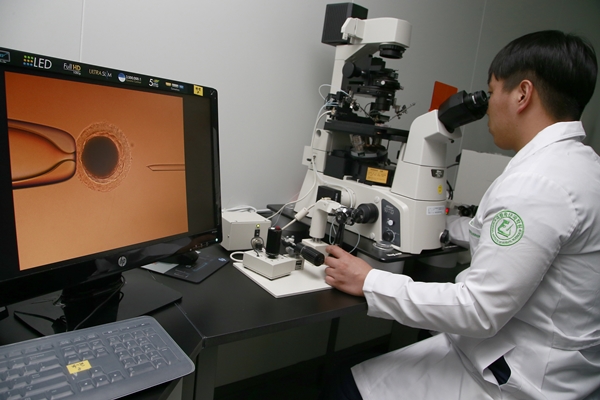
The RDA explained that 115 canine SCNT embryos were cultivated under three different conditions of modified synthetic oviductal fluid at 38.5 ℃, similar to dog’s body temperature, and among them nine were developed to the blastocyst stage. (image: RDA)
SEOUL, July 14 (Korea Bizwire) – Korean scientists have discovered a way to solve the problem of low reproduction rates of cloned dogs. Unlike cloned cows and pigs, cloned dogs were hard to cultivate with lack of proper cultivation media.
On July 13, the Rural Development Administration (RDA) announced that its researchers succeeded in developing canine somatic cell nuclear transfer (SCNT) embryos to the blastocyst stage in vitro for the first time in the world.
The RDA explained that 115 canine SCNT embryos were cultivated under three different conditions of modified synthetic oviductal fluid at 38.5 ℃, similar to dog’s body temperature, and among them nine were developed to the blastocyst stage.
The research outcome was reported in the online version of the June edition of the international “Journal of Veterinary Science.”
Unlike a common embryo made from a sperm and egg, the somatic cell nuclear transfer (SCNT) is created in the laboratories from a body cell and an egg cell. In this way, the dogs can be cloned by inseminating the somatic cells of superior dogs into common canine eggs.
However, the canine SCNT embryos have been hard to develop to the blastocyst stage so far, and the researchers were unable to study the development process from the zygote to blastocyst stage.
An official at the RDA said, “Thanks to the research, we are able to observe the development process of a canine embryo from 1-cell stage to blastocyst stage, which will lead to other studies related to the production of SCNT embryos and their transplantation.”
By Kevin Lee (kevinlee@koreabizwire.com)






